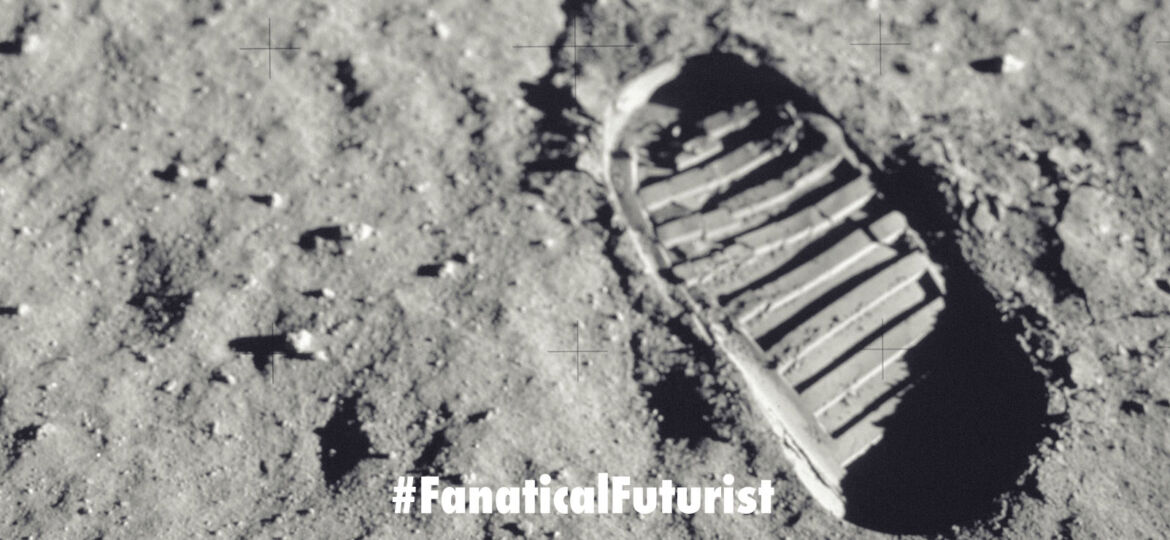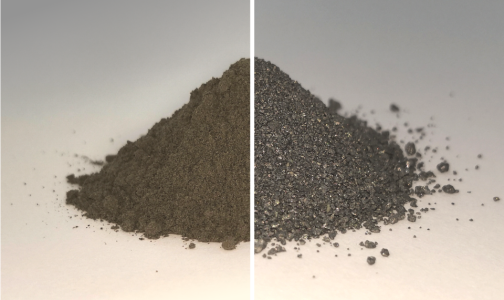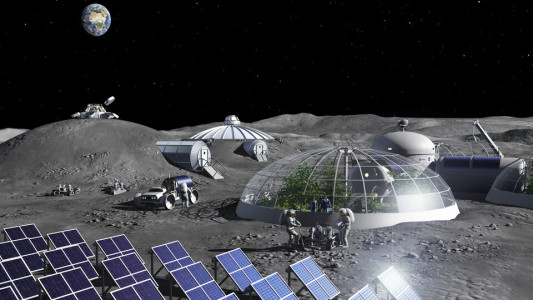
WHY THIS MATTERS IN BRIEF
This new machine turns the Moon into the equivalent of a motorway service station by helping astronauts create rocket fuel for onward missions to Mars, and oxygen for survival.
 Interested in the Exponential Future? Join our XPotential Community, future proof yourself with courses from our XPotential Academy, connect, watch a keynote, or browse my blog.
Interested in the Exponential Future? Join our XPotential Community, future proof yourself with courses from our XPotential Academy, connect, watch a keynote, or browse my blog.
As we look to colonise the stars, well, the Moon and Mars at least, the settlers of tomorrow, like the settlers of the past, will have to do their best to live off the land. But if self-sufficiency on Earth is difficult, it’s orders of magnitude more challenging in space, where there are no trees to build shelter, no plants and animals to eat, no water to drink, and no breathable air.
As a result space explorers will have to use a heavy dose of resourcefulness to survive these hostile environments, but fortunately for them they have access to some of the brightest brains on the planet.
Some of those brains, currently working at the European Space Agency (ESA), are making a machine that transmutes moon dust into oxygen, which can be used to breathe and make rocket fuel, as well as metal that can be used to 3D print shelters like these NASA concepts.
Courtesy: ESA
The surface of the moon is a barren wasteland – it’s like being exposed to the vacuum of deep space with the modest benefit of a little ground under your feet and dust on your boots, but it’s this dust, fine, grey, and bone dry, that may prove to be an invaluable resource for our lunar homesteaders.
Known as lunar regolith moon dust is 40 to 45 percent oxygen by weight. Bound up in mineral and glass oxides, oxygen is the most abundant element on the moon’s surface.
Oxygen is also, obviously, necessary for breathable air, and it’s a key ingredient in rocket fuel, but you can’t breathe or fuel ships with moon dust. Which is where ESA comes in.
The ESA team, led by University of Glasgow PhD candidate and ESA researcher Beth Lomax and ESA research fellow Alexandre Meurisse, is adapting an industrial method developed by UK company, Metalysis.
Called molten salt heat electrolysis, the process involves heating up a basket of simulated moon dust, which is a close approximation to the real thing, and calcium chloride salt to 950 degrees Celsius. The researchers then split off the oxygen with an electric current, leaving behind a pile of metal alloys.
The process can separate 95 percent of the oxygen in 50 hours, but in a pinch, 75 percent can be extracted in just the first 15 hours.
The team unveiled a proof-of-concept last October, which they said was a significant improvement on other similar processes that produce less oxygen or require far higher temperatures. And there’s room for improvement. To that end, the team announced last week they’re setting up a new oxygen plant in the Netherlands to further refine things.
A key goal is to reduce the temperature. The higher the temperature, the more energy you need, and even though the US wants to build a nuclear reactor on the Moon and is already planning orbiting solar power stations, in the early days energy will be in finite supply on the moon. The team doesn’t have a target temperature in mind though, said Meurisse, but they believe they can do better. How much better depends on how lower temperatures affect other aspects of the process like efficiency.
In addition to oxygen bound up in lunar dust, we know the moon has water. Though the details are still somewhat shrouded in mystery, scientists believe the moon’s water takes the form of ice in permanently shadowed areas at the poles.
We’ll need water to drink, of course, but we can also separate it into its elemental components, hydrogen and oxygen, by electrolysis. Provided we can get to the moon’s ice, how does the ESA process’s energy requirements stack up to the electrolysis of water?
Meurisse said the two resources will likely have different trade-offs to consider, although we may well need both in order to support a sustainable presence on the moon.
Because ESA’s process involves high temperatures, it’s very energy intensive compared to water electrolysis which can be done at room temperature. But moon dust covers the entire surface as far as the eye can see. Grab a shovel and bag some up. The moon’s ice, on the other hand, will be rarer and much more difficult to mine, and we aren’t sure of its composition or what kind of processing it’ll require to make it usable.
There’s also something else to consider – that pile of metal left over once the oxygen has been pulled off and siphoned away. This metal may prove to be a reliable building material, something the ESA team will also look into exploiting in the coming years.
“Could [the metals] be 3D printed directly, for example, or would they require refining?” Meurisse asked. “The precise combination of metals will depend on where on the Moon the regolith is acquired from, and there would be significant regional differences.”
Next, the team plan on building a pilot plant that could operate on the moon, but won’t be sent there yet, by the mid 2020s.
In the longer term though, if the technology proves scalable and space worthy it could help make the moon into a gas station for spacecraft in Earth orbit and beyond. Manufacturing fuel on the lunar surface may prove more cost-efficient than dragging it up from Earth, and that will be a major game changer in our attempt to colonise the stars and beyond
Source: ESA



















